 W
W1870s fashion in European and European-influenced clothing is characterized by a gradual return to a narrow silhouette after the full-skirted fashions of the 1850s and 1860s.
 W
WAlice from Alice's Adventures in Wonderland is one of the most iconic figures to emerge from 19th century children's literature, and one who is instantly recognized by her attire. Although many artists have depicted Alice in many different ways, the original illustrations by John Tenniel have become iconic through their subsequent repetition in most published editions and film adaptations.
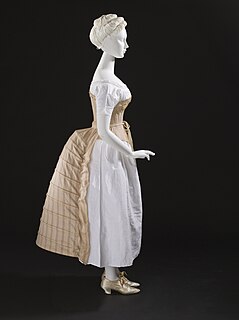 W
WA bustle is a padded undergarment used to add fullness, or support the drapery, at the back of women's dresses in the mid-to-late 19th century. Bustles are worn under the skirt in the back, just below the waist, to keep the skirt from dragging. Heavy fabric tended to pull the back of a skirt down and flatten it. As a result a woman's petticoated skirt would lose its shape during everyday wear.
 W
WA casquette d'Afrique was a type of lightweight military headgear generally used by the French metropolitan and colonial armies from the early 1830s to the 1860s.
 W
WChaps are sturdy coverings for the legs consisting of leggings and a belt. They are buckled on over trousers with the chaps' integrated belt, but unlike trousers they have no seat and are not joined at the crotch. They are designed to provide protection for the legs and are usually made of leather or a leather-like material. Their name is a shortened version of the Spanish word chaparreras. Chaparreras were named after the chaparral from which they were designed to protect the legs while riding on horseback. Like much of western horse culture, the origin of chaparreras was in the south of Spain, from which it then passed on to the part of New Spain that later became Mexico, and has been assimilated into cowboy culture of the American west. They are a protective garment to be used when riding a horse through brushy terrain. In the modern world, they are worn for both practical work purposes and for exhibition or show use. Chaps have also been adopted for use on motorcycles, particularly by cruiser-style motorcycle riders.
 W
WA deerstalker is a type of cap that is typically worn in rural areas, often for hunting, especially deer stalking. Because of the cap's popular association with Sherlock Holmes, it has become stereotypical headgear for a detective, especially in comical drawings or cartoons along with farcical plays and films.
 W
WA Dolly Varden, in this sense, is a woman's outfit fashionable from about 1869 to 1875 in Britain and the United States. It is named after a character in Charles Dickens, and the items of clothing referred to are usually a hat or dress.
 W
WGymnastyorka was a Russian military smock comprising a pullover-style garment with a standing collar having double button closure. Additionally, one or two upper chest pockets, with or without flaps, may have been worn. It had provision for shoulder boards and sometimes reinforced elbows and cuffs. The Tsarist version had the standing collar while the M35 version had a stand-and-fall collar which was replaced with the standing collar in the M43 version. The Soviet Army M35 version usually had hidden buttons. A double breasted version (kitel) for officers of all ranks existed during the Tsarist period.
 W
WThe Inverness cape is a form of weatherproof outer-coat. It is notable for being sleeveless, the arms emerging from armholes beneath a cape. It has become associated with the fictional detective Sherlock Holmes.
 W
WThe Inverness cape is a form of weatherproof outer-coat. It is notable for being sleeveless, the arms emerging from armholes beneath a cape. It has become associated with the fictional detective Sherlock Holmes.
 W
WKendall & Sons was an umbrella, rainwear and ladies wear company founded in 1870, it was bought by Combined English Stores in 1977, and subsequently by Hepworths, a Leeds based menswear company. It was then converted into the Next ladieswear chain.
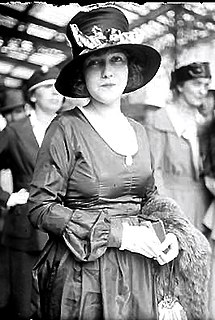 W
WA mushroom hat is a millinery style in which the brim of the hat tilts downwards, resembling the shape of a mushroom. It is a style that first emerged in the 1870s and 1880s, when it was usually made of straw. It became fashionable again from around 1907 to the late 1920s; these versions featured a distinctly downturned brim although the size and shape of the crown varied according to prevailing fashions.
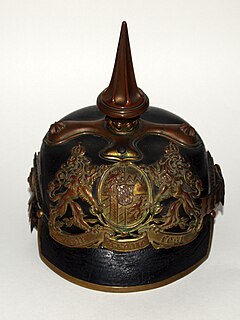 W
WThe Pickelhaube, also Pickelhelm, is a spiked helmet that was worn in the 19th and 20th centuries by Prussian and German military, firefighters and police. Although it is typically associated with the Prussian Army, which adopted it in 1842–43, the helmet was widely imitated by other armies during that period. It is still worn today as part of ceremonial wear in the militaries of certain countries, such as Sweden, Chile, and Colombia.
 W
WThe pith helmet also known as the safari helmet, sun helmet, topee, sola topee, topi, or salacot, is a lightweight cloth-covered helmet made of sholapith. The pith helmet is an adaptation of the native salakot headgear of the Philippines.
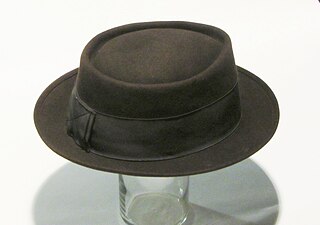 W
WA pork pie hat is one of several different styles of hat that have been popular since the mid-19th century, all of which bear superficial resemblance to a pork pie.
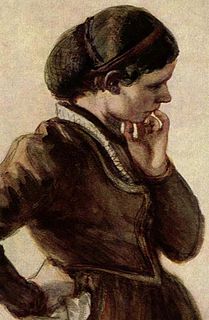 W
WA snood is a type of traditionally female headgear designed to hold the hair in a cloth or yarn bag. In the most common form, the headgear resembles a close-fitting hood worn over the back of the head. It is similar to a hairnet, but snoods typically have a looser fit, a much coarser mesh, and noticeably thicker yarn. A tighter-mesh band may cover the forehead or crown, then run behind the ears, and under the nape of the neck. A sack of sorts dangles from this band, covering and containing the fall of long hair gathered at the back. A snood sometimes was made of solid fabric, but more often of loosely knitted yarn or other net-like material. Historically a small bag of fine thread—netted, tatted, knitted, crocheted, or knotted —enclosed a bob of long hair on the back of the head or held it close to the nape.
 W
WA visite is a specific type of woman's outer garment similar to a mantle or wrap. It was particularly popular in the late 19th century, being specifically designed to accommodate the then fashionable bustle. The visite replaced the huge shawls that had previously been worn over large crinoline skirts, combining shawl and coat elements, and was even on occasion made using shawls that were valuable but no longer fashionable.
 W
WThe wedding dress of Princess Louise, Queen Victoria's sixth child and fourth daughter, was worn by her at her wedding to John Campbell, Marquess of Lorne, the heir to the 8th Duke of Argyll, on 21 March 1871 at St. George’s Chapel, Windsor Castle.